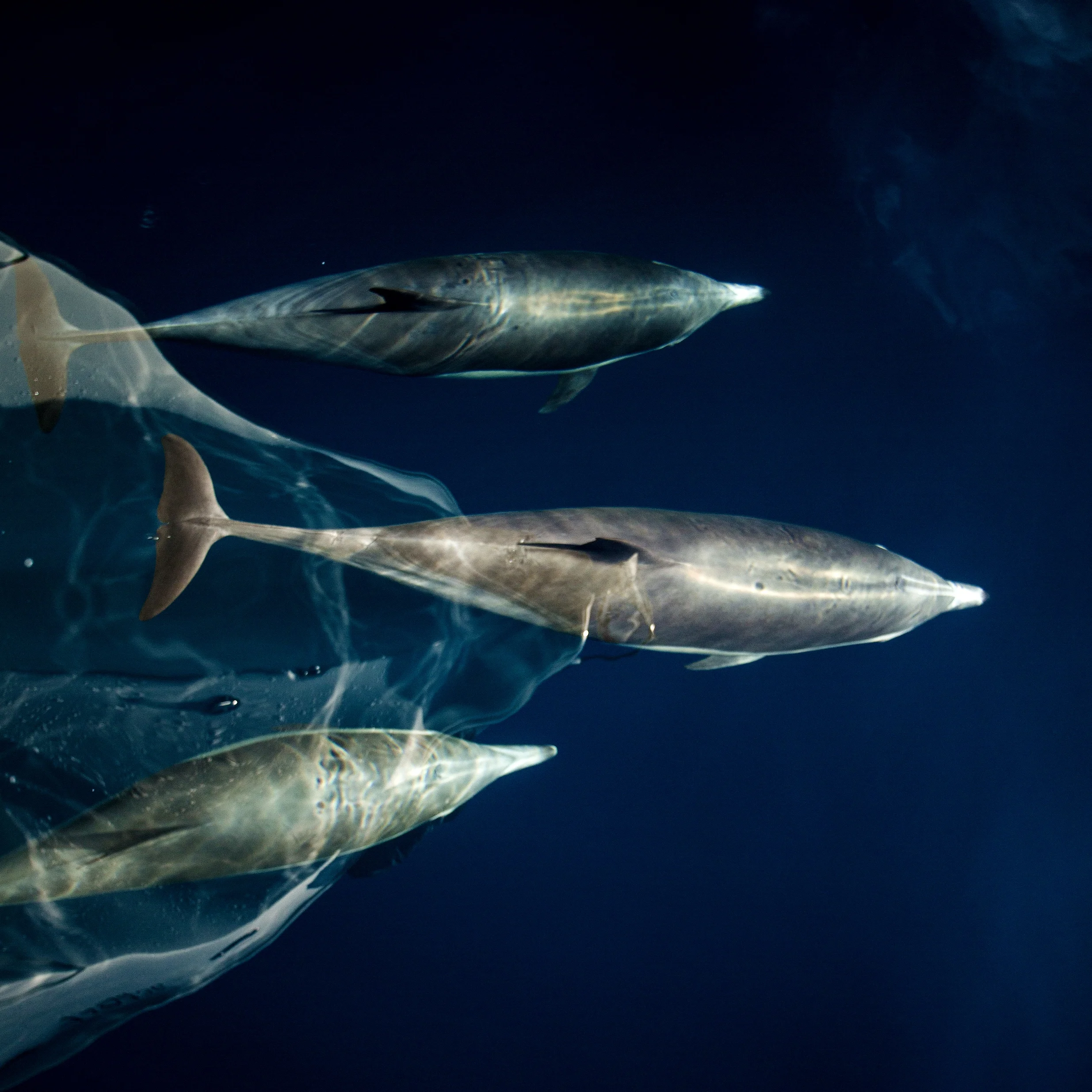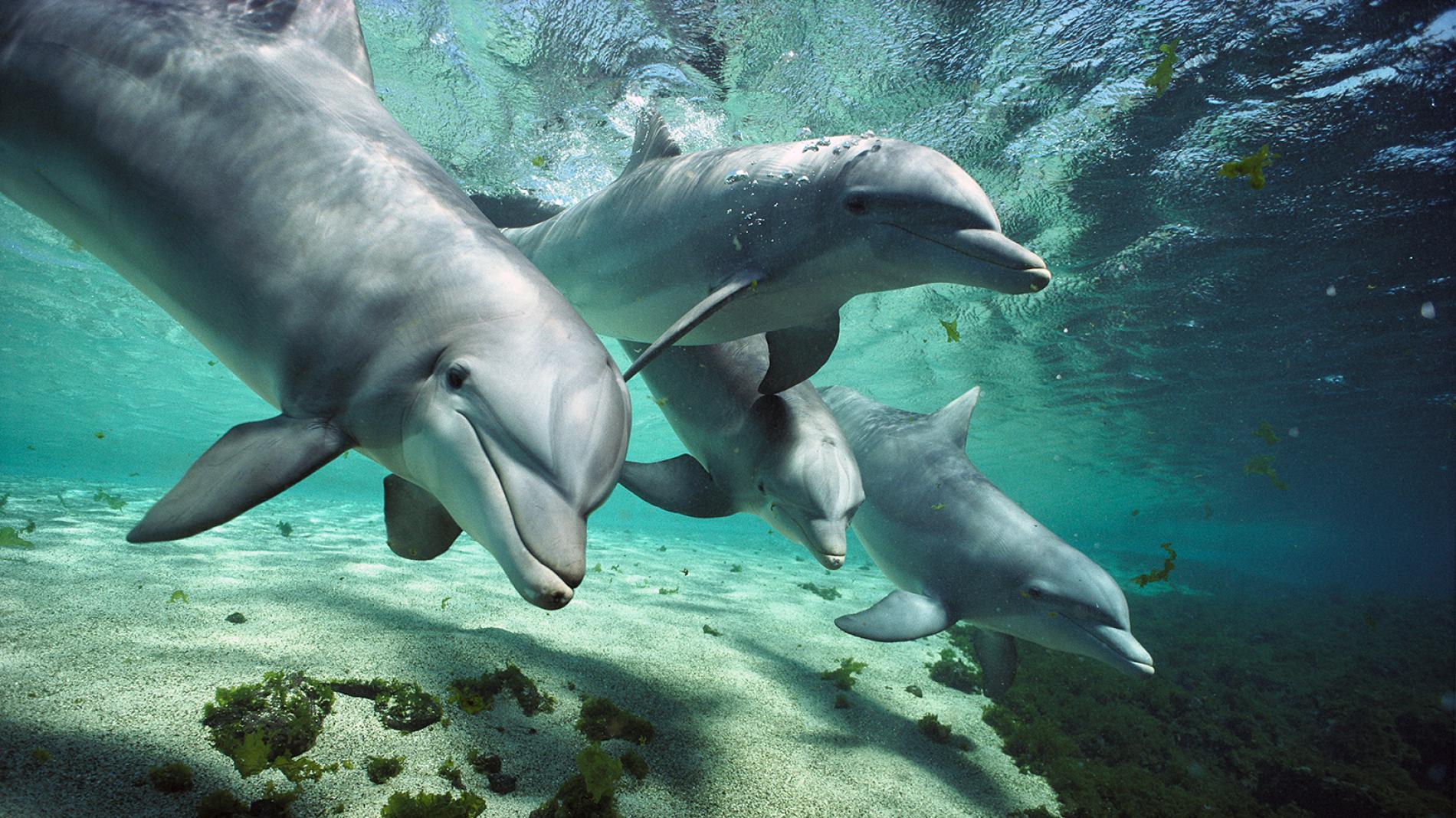Private Wildlife Excursion Tours Out Of Newport Beach California!
Off the coast of Southern California it is teeming with wildlife! From dolphins, whales, sharks, birds, seals, sea lions, and otters it’s hard not to see something.
Bottlenose Dolphin
Year Round
Bottlenose Dolphin can get up to 13ft, and weigh up to 1,400 pounds. Average lifespan is 8-17 years in the wild, but can live up to 40 years depending on conditions. Bottlenose Dolphins are the most recognizable breed of dolphin, and quite possibly most recognizable mammal in the ocean. When you think of a “Dolphin” they’re the first image that pops into your brain more than likely. One of the smartest animals on the planet. They typically live in groups of 10-30, but can be in groups of 1,000, these are called Superpods. Though it is uncommon to see more than pods of 50 at a time.
Bottlenose Dolphin Migration Pattern
Bottlenose Dolphins don’t typically migrate at a specific time, or at all. You can see them all year long in Southern California.
Common Dolphin
Year Round
Common Dolphin can get up to 8ft, and weigh up to 300 pounds. They can live up to 35 years. They have two breeds of Common Dolphin; Short-beaked and Long-beaked, and are the same length and weight. The only difference is the size of their beak. Common Dolphins love to interact with boats and can be seen riding the waves off the bow of the boat.
Common Dolphin Migration Pattern
Common Dolphin can be viewed year round. They don’t really migrate, and are very abundant and are seen very frequently.
Risso’s Dolphin
Year Round
Risso’s Dolphin also known as the “Monk Dolphin”, can get up to 13ft, and weigh 850 pounds. They can live up to 39 years. As they age, the grey, pale-bellied adult Risso’s dolphins accumulate scars from tussles with prey and other whales that can make them appear almost entirely white. Two of their main food sources are squid, and octopus. It is believed that is where they get the bulk of their scars. They also lack teeth on their upper jaw; which is strange for a toothed whale, and is assumed that they swallow prey whole upon occasion.
Risso’s Dolphin Migration Pattern
Risso’s Dolphins can be viewed year round in Southern California, but they are more abundant from May to September. They like to stay in deeper waters hunting squid, but typically like to stay in warmer waters. Which makes the California Coast a perfect spot to frequent.
Dall’s Porpoise
Year Round
Dall’s Porpoise can get up to 6ft, and weigh 230 pounds. They can live up to 20 years. Dall’s Porpoise have been observed swimming and playing with Killer Whales. Though they are considered a food source for Killer Whale. Just like dolphins they enjoy swimming in the waves made by the boat. They even enjoy playing in the wake made by large whales heads, it is called “Snout Riding”. Dall’s Porpoise will often zigzag around at great speed on or just below the water surface, creating a spray called a "Rooster Tail". Thousands of Dall’s Porpoises were being caught by fishing vessel’s and became a huge problem, but has since become regulated. Numbers are still strong despite the over fishing.
Dall’s Porpoise Migration Pattern
You can see them any time of the year. They don’t really migrate, but when the water becomes unseasonably cold they will travel south closer toward the equator.
Sea Lion
Year Round
Sea lions can get up to 6ft, and weigh up to 660 pounds. They can live up to 20-30 years. Sea lions can stay out at sea for up to 2 weeks at one time. By continuously diving and returning to the surface for rest. They are usually spotted sun bathing on rocks, or docks of areas with low traffic. Though cute and cuddly in appearance they have also been known to sink boats, fight over the best spots on docks or rocks, and cause a lot of noise complaints.
Sea Lion Migration Pattern
Sea lion males migrate up north for feeding. They will go as far north as Alaska. Females tend to stay near breeding rookeries and forage for food.
Harbor Seal
Year Round
Harbor Seals look very similar to Sea lions. One of their most distinct differences is the lack of ear flaps. They also don’t get as big as Sea lions at the biggest they get to about 5ft, but can weigh up to 300 pounds. Average lifespan for a Harbor Seal is 25-30 years. They have smaller flippers so they have to move around on their bellies.
Harbor Seal Migration Pattern
Harbor Seals don’t really migrate. They move further south for the winter, but that just means sightings become more frequent.
Sea Otter
Year Round (Rare)
Sea Otters can get up to 4ft, and weigh 99 pounds. Typical lifespan for a sea otter is 15-20 years. In 1987 there was a “No Otter Zone” from Monterey Bay to the Boarder of Mexico. This was implemented to try and stop them from being poached for their pelts, referred to as Soft Gold on the Chinese market. They had become endangered from the overhunting hence why they became referred to as Soft Gold. In 2012 the courts put an end to the No Otter Zone and they’re free to go down the coast. The courts believed the ban was doing more harm to the Otters than good. Seeing as they fed on the sea urchins, and left unchecked greatly reduced kelp forests. Which many species call home and help them hide from larger predators.
Sea Otter Migration Pattern
Sea Otters don’t migrate great distances. Though the “No Otter Zone” ban has been up since 2012, they’re still a rare sighting down south. Hopefully that changes as these cute little mammals population grows.
Elephant Seal
Year Round
Elephant Seals can get up 16ft, and weigh 6,600 pounds. Average lifespan of an Elephant Seal is about 21 years. Though they mostly stay up North toward Santa Barbara they still can be seen down South upon occasion. Elephant Seals can hold their breath more than 100 minutes at one time. They spend about 80% of their lives in the water. Diving for skates, rays, eels, octopuses, larger fish, and even small sharks. It is pretty easy to tell the difference between Elephant Seals and Sea Lions, or Harbor Seals. Not only do they get larger than the common seals, but they also have a long nose that resembles an elephants trunk. Also they are known to be fierce fighters and very territorial, especially during mating season.
Elephant Seal Migration Pattern
Elephant Seals take part in something called a “Double Migration”. Males migrate up the North Pacific twice a year to forage and build up energy reserves, so they can then fast for 2-4 months while mating and staking out territory for harems. The Elephant Seal will travel up to 13,000 miles from both migrations. Which means being out at sea for 300 days a year at times.









